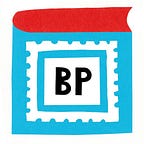On April 24, 2019, at 9 AM, the owner of the Harvard Book Store in Cambridge powered up the above Rube Goldberg device, and kept it running all day and all night to deliver into readers’ waiting hands a single book: the final report of Special Counsel Robert Mueller. Said Harvard Book Store owner Linda Seamonson, holding a copy out for a reporter, “it’s still warm.” The report had been made available for free that morning on the Justice Department web site: you could read it easily on a laptop or, a bit more uncomfortably, a mobile device; you could print out all four hundred pages on eight-and-a-half-by-eleven; you could wait a few weeks for a commercially published copy of the public-domain text (from Melville House, Scribner, or Skyhorse). But in the interim Paige M. Gutenborg, the nom de guerre of Harvard Book Store’s Espresso Book Machine, had a moment in the sun serving eager people who like to read (underline, make notes in, carry around) a physical book with the latest news. Some customers had put themselves on a waiting list in the store, some had ordered the volume online, and some came in off the street when they saw the unexpected book in the window on the day of its release (“There’s been a lot of, ‘Hey wait a minute. This just came out, so how is this a book?’” said manager Alex Meriwether). Paige — who normally chugs along without much fanfare — found herself on every local TV station by the end of the day. The owners stayed up all night printing books, shutting down web orders for a while to keep up with demand. The store tweeted that a supporter anonymously sent Paige flowers to cheer her on.
The destiny of the Espresso Book-Machine-that-could tracks some of the highest hopes and most unexpected turns in the rocky history of digital reading. Paige Gutenborg’s Victor Frankenstein was publishing pioneer Jason Epstein, who famously, at the age of twenty-two, invented the trade paperback, on the model of the low-cost Armed Services editions of American lit being read by GIs returning from the war. He went on, eventually as editorial director at the publishing giant Random House, to have a hand in founding The New York Review of Books (where your humble editor used to work); a proto-Amazon book-ordering behemoth called Reader’s Catalog; and the Library of America, a compendium of American literature (dreamed up with critic Edmund Wilson) based on France’s august Pléiade editions. In 1999, in a series of panoramic lectures on the future of publishing at the New York Public Library, Epstein predicted that digital storage and transmission would in future allow books to be printed on demand wherever people wanted to read them. He got together with some developers and investors and the Espresso Book Machine was born. There are now around fifty Espressos puffing away around the globe, twenty in American bookstores, even one in the most hallowed book destination of them all, the Alexandrian Library in Egypt.
Since 1999, though, the possible ways of getting a book anywhere any time have proliferated. Most people have in their pocket an object that, if need be, can conjure most books one can think of in the time it takes to sneeze, either to be read or listened to. Readers also now have the ability to have shipped to them, pretty quickly, any book in print and to find pretty easily a second-hand copy of most out-of-print books they might have a mind to read. Readers can check library catalogs online from home, reserve books remotely, summon them via interlibrary loan, and borrow them digitally and orally as well as in print. The ease of publishing from digital files has made out-of-copyright books easier and cheaper to reprint and more readily available to online book-buyers. This embarrassment of riches has made the once startling promise of the Espresso Book Machine seem a bit more quaint.
And yet some things going around have come around. “Print on Demand” technology — which compresses the once months-long process of publishing a book into a few minutes — continues to nourish book culture, allowing large and more modest publishers to take risks with small print runs and fill unexpected orders quickly, knowing they can print more easily if a book catches on. Print on Demand has been a boon to the large ecosystem of self-published authors (more on this below). And, along with the ease of e-book distribution, it has brought new life to out-of-print books that did not have a large enough (known) audience to be reissued…
Read more! Our full story on DIY books (Parts I and II) is available at our website.
Book Post is a by-subscription book-review service, bringing short book reviews by distinguished and engaging writers direct to subscribers’ in-boxes, and other tasty items celebrating book life, to those who have signed up for our free posts and visitors to our site. Please consider a subscription! Or give a gift subscription to a friend who might be drawn into the reading life. Reviewers include Jamaica Kincaid, Lucy Ellmann, and Calvin Baker.
And don’t forget to find us on Facebook, Twitter, and Instagram! Until next week…
